The Caribbean has always been a place of dreams for scuba divers and other travelers alike and 700 islands, territories, and cays await to be explored above and underwater.
Situated in the center of the Americas the main body of water here is the Caribbean Sea, as well as the Atlantic Ocean in the North and it is sprawling with life.
Some of the best diving destinations in the world can be found here and the entire region has so much to offer it is impossible to list it all in one article.
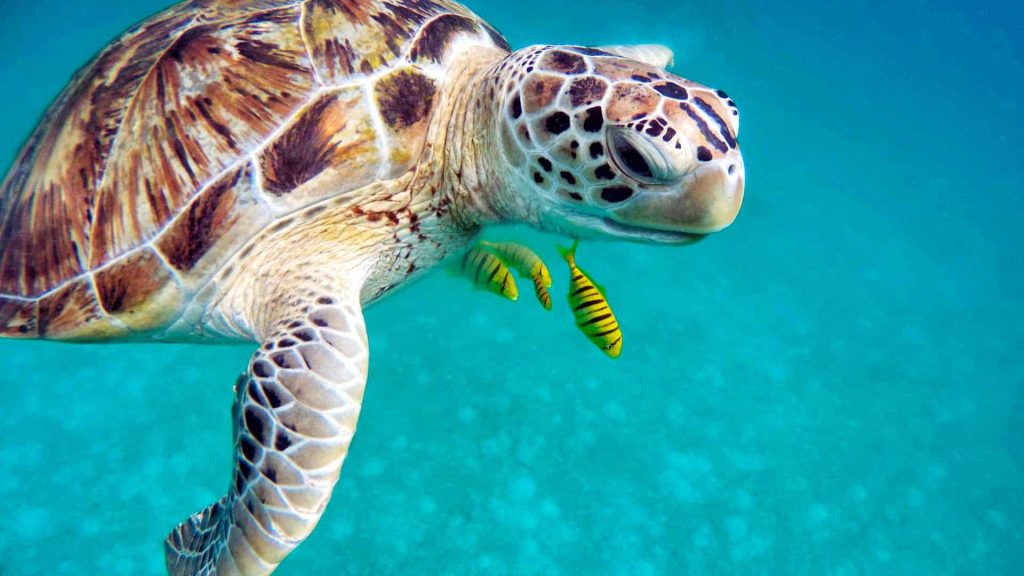
A multitude of languages, cultural influences, and demographic groups live here and no island is like the other.
All of its islands were at some point European colonies, and while some countries are independent, many others are dependencies of larger European and American nations still.
Tourism is a main economic driver everywhere and besides divers and travelers, dozens of cruise liners arrive and depart here every day.
Let’s look at the places in this region in more detail and try to understand the Caribbean region as a whole. It consists of three main island groups of which the Lesser Antilles are divided further into three smaller divisions:
- Lucayan Archipelago
- Greater Antilles
- Lesser Antilles
- Leeward Islands
- Windward Islands
- Leeward Antilles (ABC-islands)
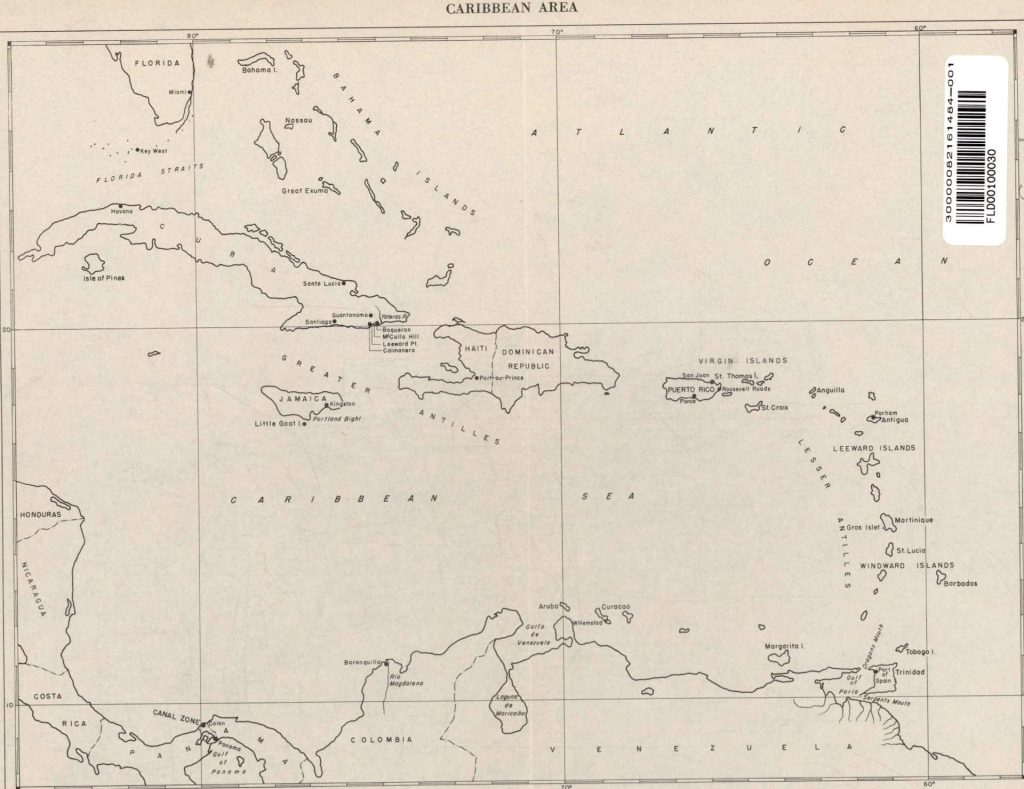
The three main island groups have also historically been referred to as the West Indies. The Lesser Antilles and the Greater Antilles form the Antilles, while the term the Caribbean is sometimes only used for this smaller part or for the entire region.
The Lucayan Archipelago and the Greater Antilles are known for bigger pelagics, warm water, and the more “exotic” Caribbean flair and cuisine. Dive here if you like the big stuff like sharks, rays, whales, and more.
The Lesser Antilles are largely European territories or former colonies and diving here is a bit more relaxed. The waters are even warmer and diving conditions remain similar throughout the year.
While the outer territories benefit from their border to the Atlantic Ocean for pelagics sightings, the marine life around the ABC Islands is more aimed toward macro lovers. You won’t find sharks or whales here but plenty of turtles, schools of fish, and very healthy corals.
Let’s look at the island groups individually:
Lucayan Archipelago
The Lucayan Archipelago in the North East consists of the Bahamas and the Turks and Caicos Islands. Both were British Overseas Territories and the Turks and Caicos Islands remain to be.
The waters around these island groups are warm year-round, crystal clear, and full of sharks. The per capita income is high and the economy flourishing. English is the official language, making it easy to communicate.
The Bahamas are widely known as the premier dive location if you want to see tiger sharks and Tiger Beach is one of the most famous dive sites in the world.
They are a large island group and consist of 3,000 smaller islands, cays, and islets, although not all of them belong to the Caribbean geographically. The Bahamas are also home to the world’s third-largest barrier reef and scuba diving and snorkeling in the Bahamas are among the best in the Caribbean.
Water temperatures stay above 24°C(75°F) even in winter and diving conditions are pristine. Shark diving is the main attraction and is best done between November to May. Tiger sharks, oceanic whitetips, hammerhead sharks, bull sharks, eagle rays, and humpback whales roam the waters.
Especially popular among US divers and travelers, the Bahamas are also a great liveaboard diving destination for all levels of diving.
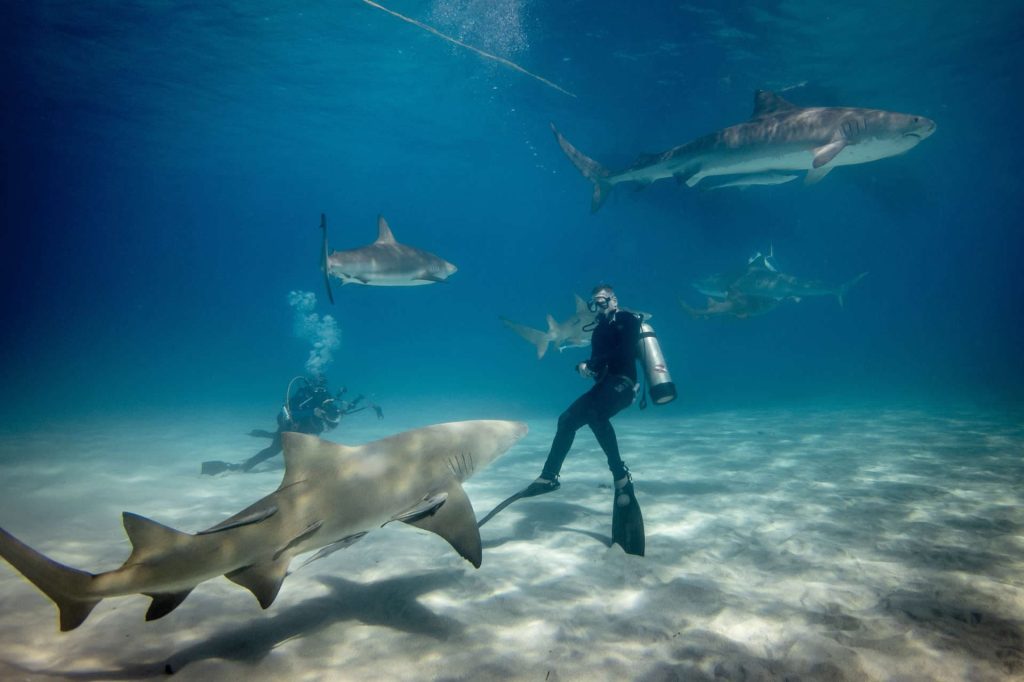
A bit further South, the Turks and Caicos Islands offer similarly great diving conditions among their 40 islands. While much smaller, they are also less frequented by travelers, making the entire experience very personal and pleasant.
Lots of fish, turtles, rays, and dolphins live in these waters, but the highlight are clearly the migrating humpback whales from January through March. Snorkeling is possible with them and if you’re lucky, you can hear them sing during a scuba dive!
Diving is mostly done on the numerous walls and drop-offs but there are also shallower reefs and wrecks to be explored.
Greater Antilles
The Greater Antilles are the central island group in the Caribbean and offer a wide variety of cultures and ways of life.
They comprise the Cayman Islands (UK), Cuba, Jamaica, Hispaniola with Haiti and the Dominican Republic, as well as the US territory of Puerto Rico and the Spanish Virgin Islands.
Infamous for being a haven for dubious offshore companies and finances, the Cayman Islands are also the richest nation in the Caribbean.
Sandy beaches, clear waters, and large biodiversity await on the three islands Grand Cayman, Cayman Brac, and Little Cayman which is popular among snorkelers, scuba divers, and boat owners.
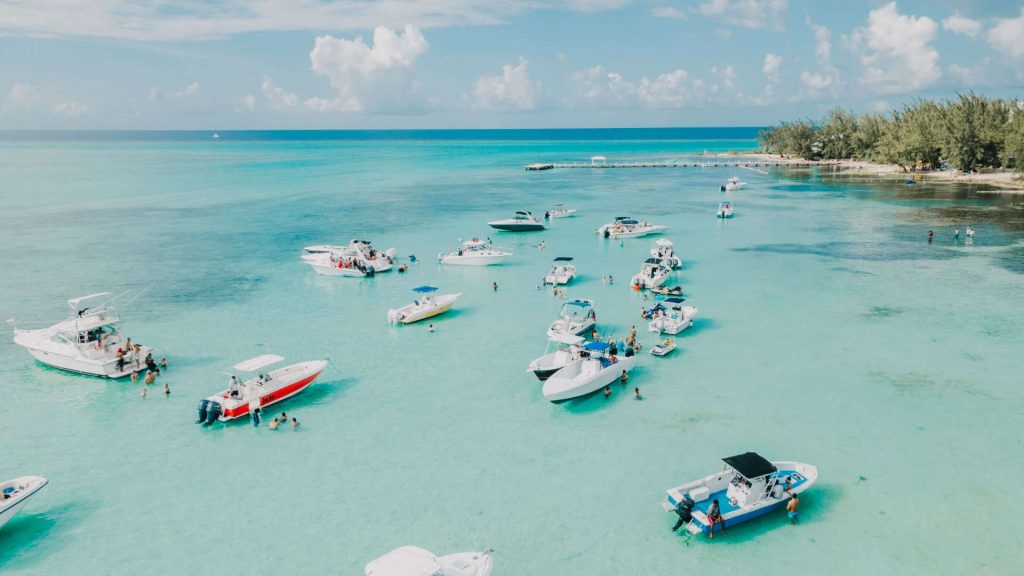
They offer some of the best scuba diving in the Caribbean with great wreck dives, healthy corals, and deep drop-offs well beyond the limits of recreational diving.
Diving conditions are suitable for beginners and advanced divers alike and they are a great beginner diving destination. Eagle rays, coral gardens, and especially stingrays are abundant here. Water temperatures remain pretty constant between 26-28°C (78-82°F) throughout the year.
The way of life in Cuba is totally different and the country is a dream destination for most travelers around the world.
Cuba is famous for its cuisine, music, dance, and literature, as well as for being constantly in political discourse with the USA. The island should be on every traveler’s bucket list, if only to experience a taxi ride in Havanna, go to a Rumba session in one of the many dance clubs, or relax at the beach.
Diving in Cuba is amazing and the country is home to the second-largest reef in the world. Jardines de la Reina is among the best reef dives in the world and a super popular shark diving destination.
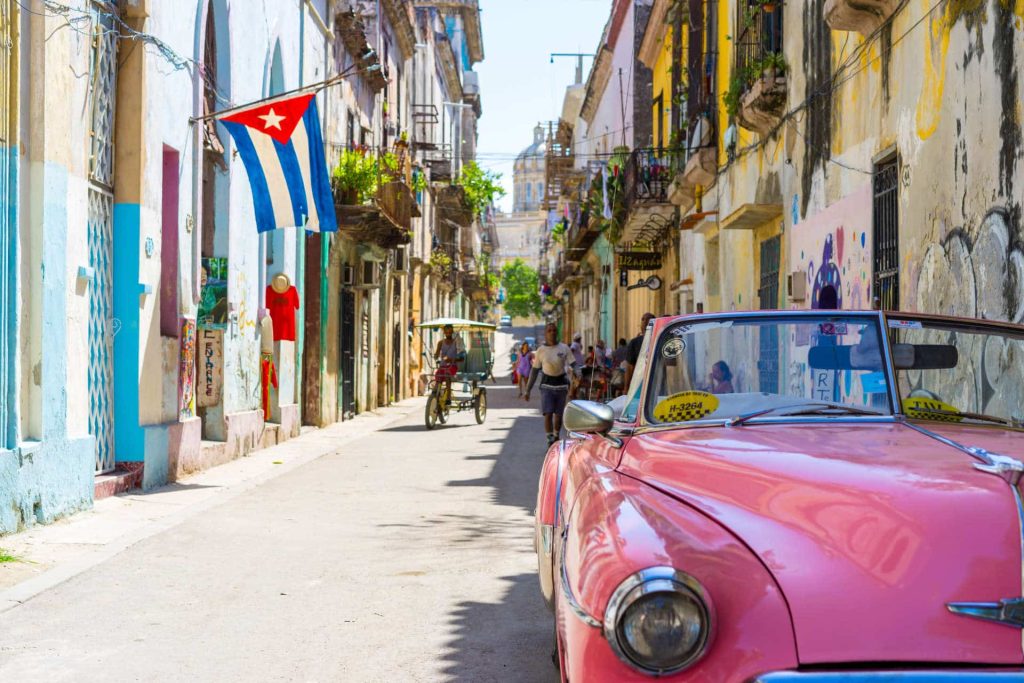
Be aware that some of the protected marine areas allow only a few divers per year, so make your reservations for diving well in advance.
Jamaica is the third-largest island in the Greater Antilles and offers lots of rays, sharks, sea turtles, schools of fish, and corals.
Famous for its reggae music, sprinting teams, and culture, you will have a great time here above and underwater.
In addition to super easy reef diving conditions, you can find lots of wrecks, nurse sharks, and interesting underwater rock formations.
Hispaniola is one of the largest islands in the Caribbean and divided into two separate nations: Haiti and the Dominican Republic.
Haiti is the Creole/French-speaking part of the island and is plagued by political unrest. Tourism is very much underdeveloped here, but the government is trying hard to change that.
Diving in Haiti is not nearly as popular as in its neighboring country, meaning you’ll find fewer dive shops…but also fewer other divers.
Check out Amani’s Zombie Hole for black corals, stingrays, eagle rays, and untouched reefs. You’ll also find plenty of wrecks around the island that are populated by all kinds of fish and corals.
The Dominican Republic is a whole different story and one of the most popular and frequented travel destinations in the Caribbean. Scuba divers, honeymooners, hikers, birders, and those who just want to relax are drawn to its sandy beaches and an easy-going culture.
Diving in the Dominican Republic is perfect for beginners and the conditions are easy. Mangrove forests are a highlight here, as well as plenty of corals, but be aware that not all dive centers here offer English-speaking staff.
Like at many other diving destinations in the Caribbean, you can encounter and hear migrating humpback whales from December to March in these waters!
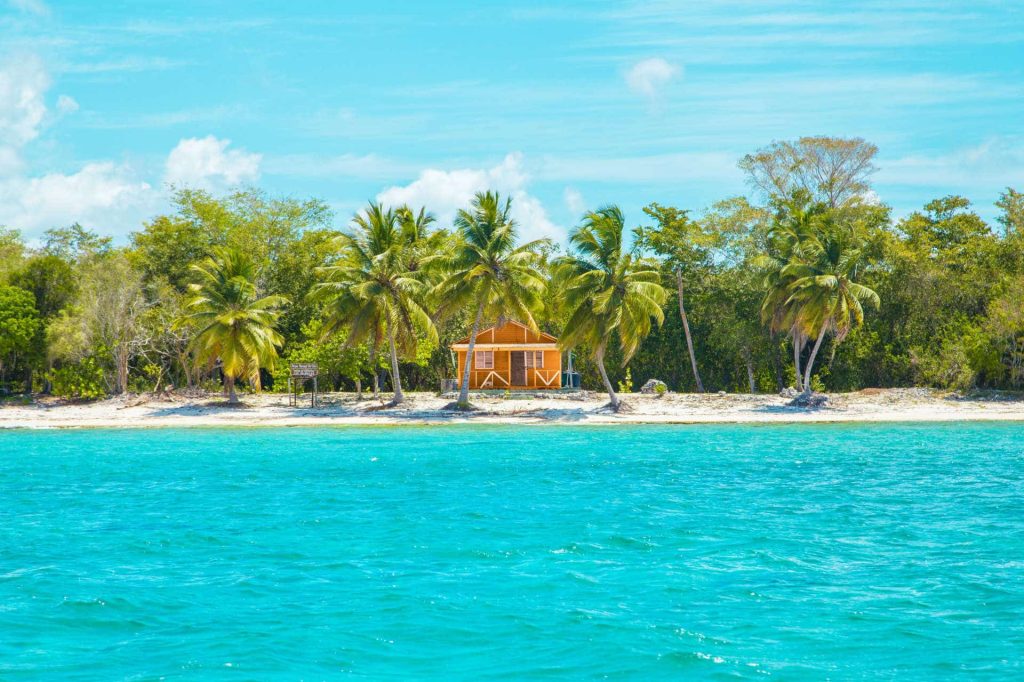
Last but not least, Puerto Rico is a convenient diving destination for US divers, especially as flights count as domestic. Acquired by the United States from the Spanish in 1898 in the Treaty of Paris, both English and Spanish are the native languages here.
There is A LOT to see while diving in Puerto Rico, making it one of the better diving destinations in the Caribbean. Plenty of fish can be found around the islands, humpback whales in winter at Mona Island, cave diving on Desecheo Island, and the reefs are plenty and healthy.
Its connection to the USA also ensures that the infrastructure is good and the standard of living higher than on many other Caribbean islands. Prices are also near identical to the rest of the US.
Lesser Antilles
The Lesser Antilles as the last of the three big island groups in the Caribbean are themselves divided further into three smaller groups: The Leeward Islands, the Windward Islands, and the Leeward Antilles.
They form the eastern boundary of the Caribbean and are bordered by both the Caribbean Sea and the Atlantic Ocean.
24 countries and territories and thus the majority of the Caribbean nations are set here on smaller islands that sprawl with life both under and above water.
8 of which are sovereign, namely Antigua and Barbuda, Barbados, Dominica, Grenada, Saint Kitts and Nevis, Saint Lucia, Saint Vincent, and the Grenadines, and Trinidad and Tobago.
The remaining ones are dependencies of the UK, France, the Netherlands, the USA, or Venezuela.
You can go diving anywhere in the Caribbean and the Lesser Antilles, however, we’re only looking at the hotspots now to make it somewhat more understandable.
Leeward Islands
There are lots of islands in this region and none of them are far away from the others. They form the border of the Caribbean Sea to the Atlantic Ocean and the marine life here is usually much smaller.
The United States Virgin Islands is the first larger island group in the Lesser Antilles comprising Saint Croix, Saint Thomas, Saint John, and some smaller islands.
They are only 60km (40mi) East of Puerto Rico and easy to get to. All three islands await with distinct personalities and the diving here is typical Caribbean fashion. Great reef dives, plenty of sharks and rays, lots of fish, and heaven for underwater photographers.
The macro life is sprawling both under and above the surface and whale watching is a big highlight here!
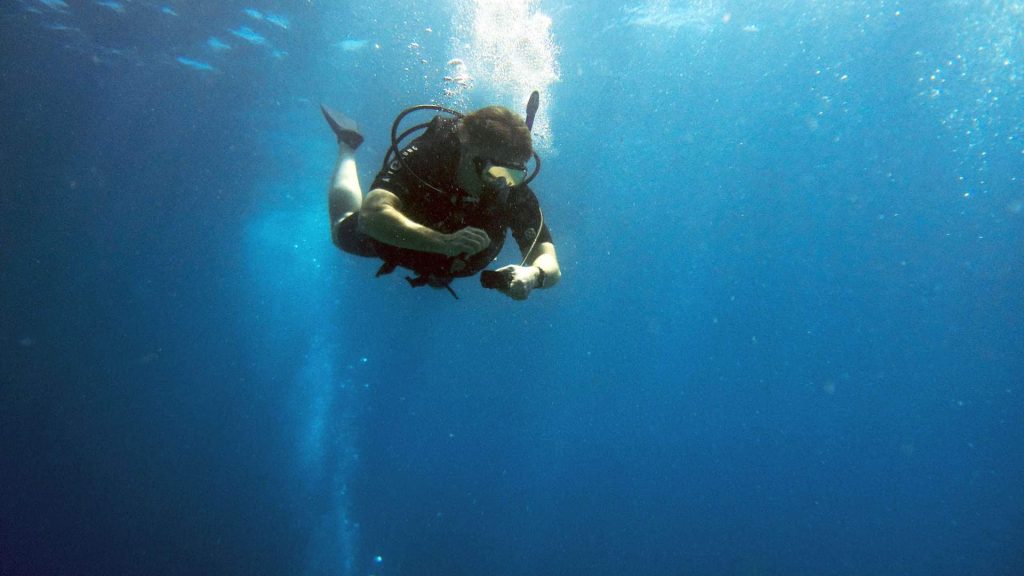
The British Virgin Islands consisting of Tortola, Virgin Gorda, Anegada, and Jost Van Dyke, in addition to about 50 smaller islands have long been scuba diving and snorkeling hotspots.
Most dive shops can be found on the main island of Tortola that’s also home to the capital Road Town, and most diving takes place in close proximity.
Diving in the British Virgin Islands is easy for all levels and especially great for first-time wreck divers! Plenty of smaller and larger wrecks can be dived at here in crystal clear warm waters.
The crown jewel and most popular dive site on the islands is the RMS Rhone shipwreck but there are numerous other great diving opportunities here.
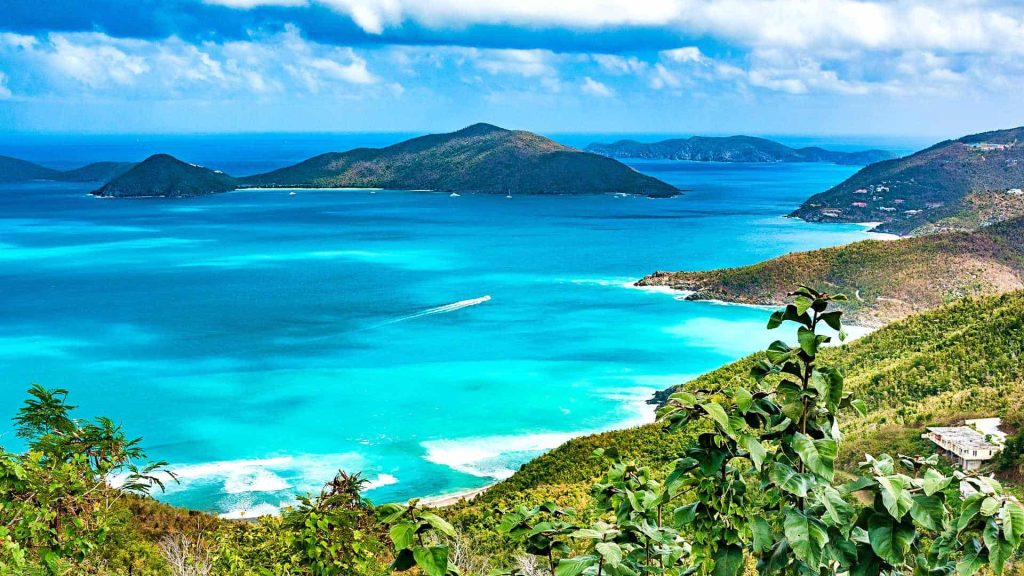
Anguilla is another British-owned island territory that awaits with great warm-water diving conditions. Seven marine parks are located around it and the waters here are so warm you can often ditch the wetsuit entirely and just dive in a rash guard.
El Buen Consejo is among the best wreck dive sites in the Caribbean and you can dive around the intact cargo and cannons still.
Diving in Anguilla is more of a niche than in some other British island colonies which means the reefs are even healthier and less frequented.
Saint Martin is divided into French-controlled Saint Martin and Dutch Sint Maarten, of which the latter is the more popular diving destination for most.
At the 17 dive sites around the island, you find typical Caribbean diving conditions and lots of wrecks. Some of them are artificial, but all of them are in good condition. Traveling here from Europe is similarly easy as the ABC-islands as they are considered domestic flights from France and the Netherlands.
The most popular spot here is not underwater and not even the prettiest one at all…no. It is the famous airport beach where airplanes land a few meters above the spectators.
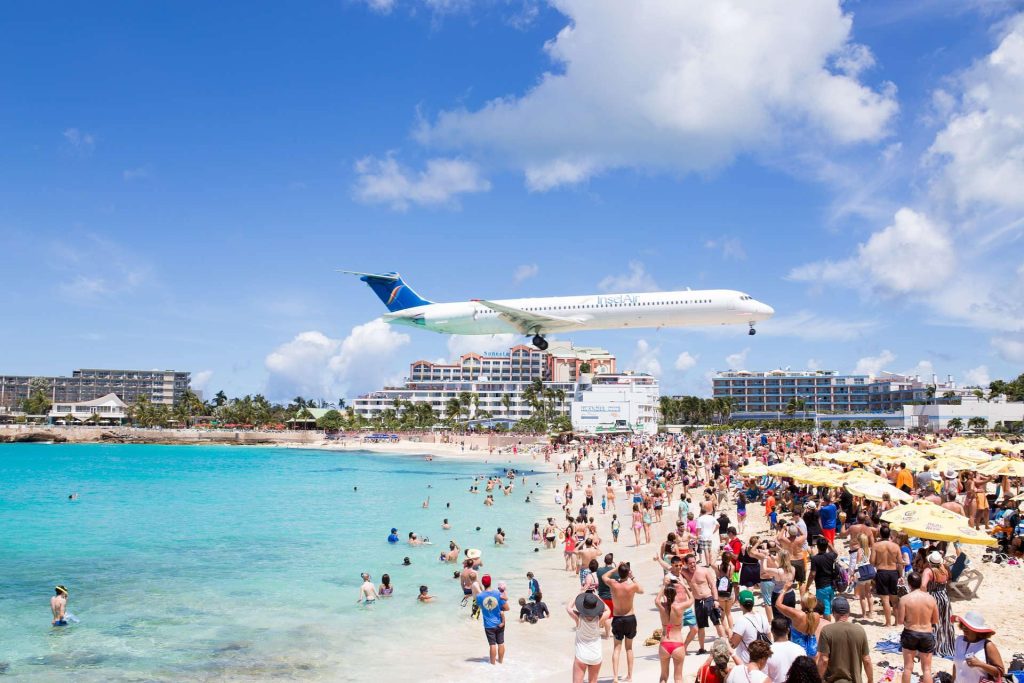
Right next to it, the French island of Saint Barthélemy offers very shallow beginner-friendly diving. The channel between these islands is no deeper than about 30m (95ft).
A popular destination for French divers, it offers Caribbean flair with lots of smaller fish to see.
Saba is another former Dutch colony that has a lot to offer both underwater and on land. The entire volcanic island is protected, meaning flora, fauna, and marine life are in great conditions.
The island is surrounded by really deep waters, which is closer to some of the Pacific islands than the rest of the Caribbean.
Scuba diving is great with wrecks, healthy reefs, and something for all levels of diving.
Sint Eustatius is a lesser-known Dutch island in the Caribbean Netherlands that awaits divers with lots of wrecks to explore. It is also a volcanic island, meaning the underwater topography is full of lava rocks and similar rock formations.
Antigua and Barbuda are a sovereign nation in the Lesser Antilles and a famous honeymoon travel destination.
The water temperatures here are nice and warm year-round and invite divers, snorkelers, and beach-goers to enjoy the sandy beaches. The hotspot for scuba diving is the protected Cades Reef which spans several miles and is sprawling with life.
As a year-round travel destination, this is the perfect place for your honeymoon or couple’s retreat and to get some dives in in between!
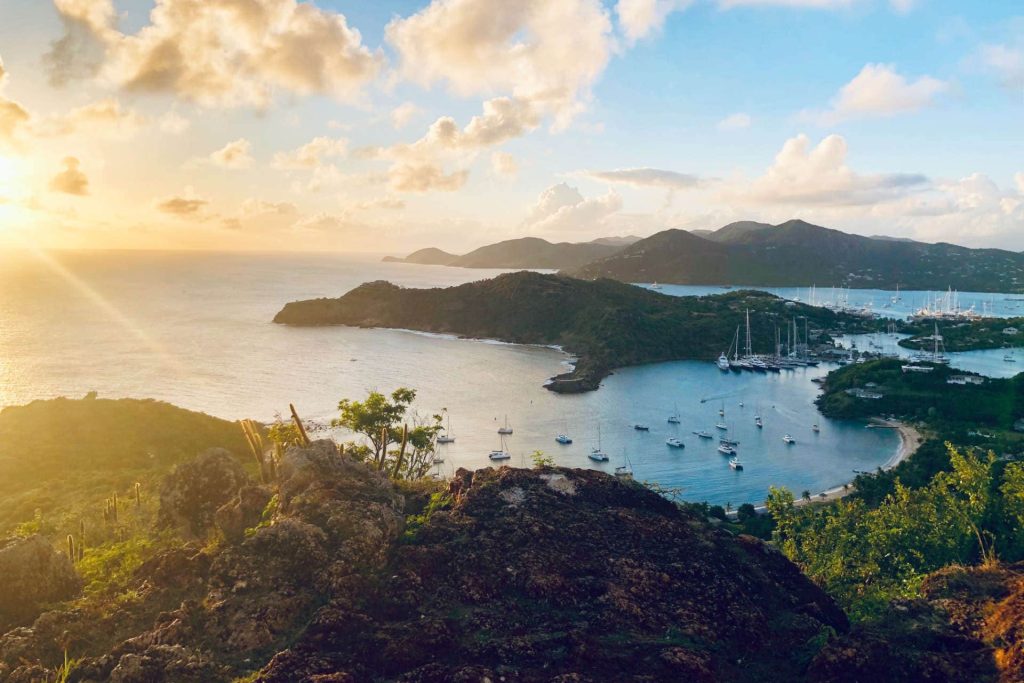
Further toward the West, Saint Kitts and Nevis are two British islands with some of the best wreck dive sites in the world. It is also a spot in the Leeward Islands where you can find some bigger pelagics.
The M.V. River Taw and the tug boat M. V. Corinthian are the most popular ones here that you should check out.
Monkey Shoals is the reef that separates the two islands and awaits divers with a shallow, beautiful coral atoll to explore.
British-owned Montserrat is not as popular as its neighbors, however, diving here with one of the very few dive shops is great. Rendezvous Bay and Redonda Island are arguably the places to go for diving in Montserrat.
There is even a cavern that’s home to different species of bats you can dive in!
Last but not least, the Guadeloupe Islands (not to be confused with the Mexican island of Guadaloupe famous for its Great Whites) offer great dive sites around its six major islands.
La Grotte aux Barracudas, an underwater cavern, as well as the Jacques Cousteau Underwater Reserve are two spots to put on your list!
Check out the statue of Jacques Cousteau and plenty of colorful fish in this area!
Windward Islands
The Windward Islands are the southernmost point of the Caribbean and very close to Central America and the Venezuelan coast.
Dominica is the first of the Windward Islands and synonymous with one thing: Migrating whales.
Pods of sperm whales come to these shores from November until March and whale watching is hugely popular. In addition, other species of whales migrate through here every year and divers can get lucky encountering them underwater.
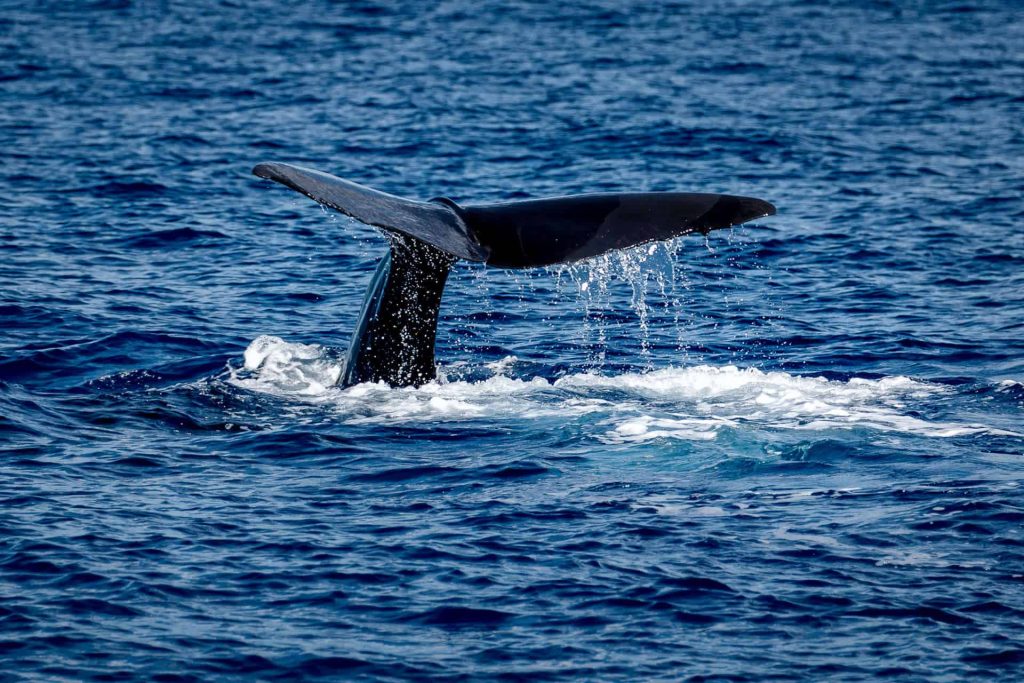
If this is not enough to make your trip worthwhile, there are the “usual” things that make diving in the Caribbean amazing like warm water, great visibility, and plenty of fish.
Diving in Dominica is largely done in one of the three major marine parks and the diving conditions are superb everywhere.
Sandy beaches and palm trees await on the tropical island of Martinique that’s a great travel destination to relax.
Rocher du Diamant (Diamond Rock) is the most popular dive site, followed by Anses d’Arlet (Arlet’s Coves). Pack a good underwater camera as the clear waters make underwater photography a pleasure here and the reefs are colorful and plenty.
There are lots of dive shops on the island so you will never have shortage of opportunities to get your feet wet. If you prefer snorkeling, you can do so at any of the beaches here.
Saint Lucia is great for shore diving and there are so many reefs, wrecks and fish here that make this another great diving destination in the Caribbean. The entire island is basically a single amazing dive site so find a dive shop to fill your tanks and jump in!
Granted, the Eastern shore is much more popular than the other sides of the island, but you will find coral gardens everywhere.
Saint Vincent and the Grenadines offer some of the best diving in the Caribbean, especially if you enjoy muck diving.
Just dive around the sandy bottoms and fish, critters, turtles, and more will naturally appear everywhere.
There are more than 30 islands in this island group, but most life happens on the main island of Saint Vincent.
In 2021, the volcano La Soufrière erupted, causing huge dames to residential homes on the island, and you can still see the damage done by it.
Barbados has long been a traveler’s favorite and from relaxing at the beach to snorkeling and diving, you can have a great vacation here.
The island offers literally hundreds of wreck dive sites and the Pamir, Friars Crag and Stavronikita should be on your bucket list when visiting. Moreover, the marine life is diverse and pelagics are just as common as smaller fish, turtles, and critters.
The rest of the island is also great for non-divers who just want to relax or enjoy a good dinner at the beach!
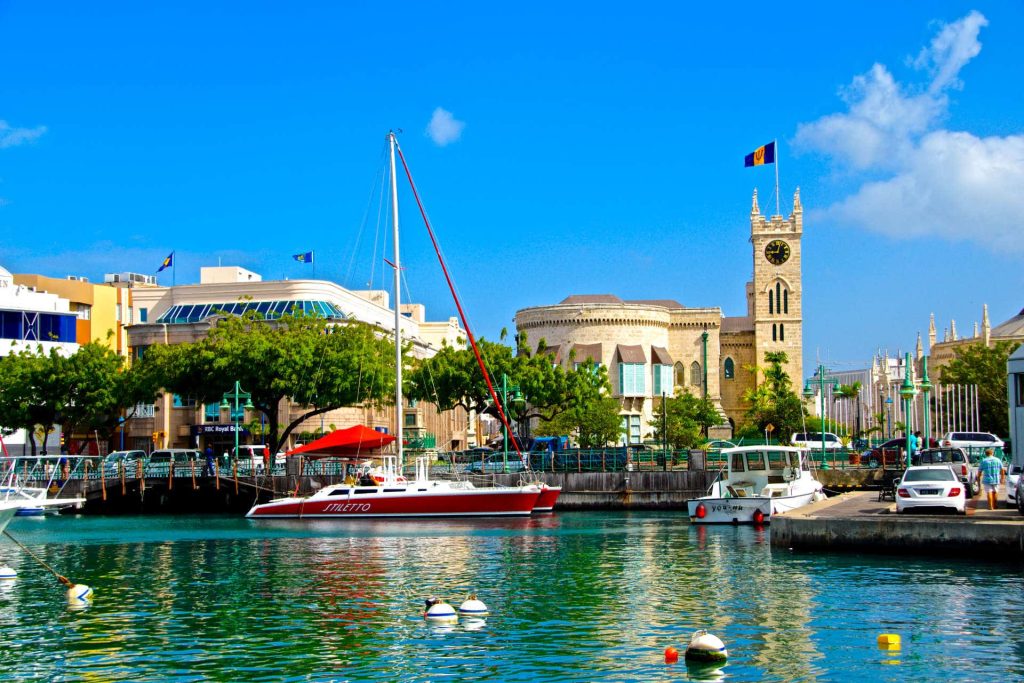
Grenada, including its smaller sister islands Carriacou and Petite Martinique, is also called the “Island of Spice” for its nutmeg and mace production.
It is a popular travel destination not only for divers but offers some of the best diving in the Caribbean and around.
There is a lot to see: Humpback whales, sharks, eagle rays, pilot whales, turtles, dolphins…the list goes on.
If you are not into diving with pelagics or like to have some variety, there are wrecks to discover, even more fish, and even an underwater sculpture park!
Finally, Trinidad and Tobago are closest to the Venezuelan coast and sometimes counted toward Central America.
Diving with pelagics, clear waters, and huge coral gardens, there is something for everyone here. The Guyana Current fills this region with life and makes it a premier diving destination in the Caribbean.
Be aware that there is quite a bit of current at most dive sites, and some of the sites are clear drift dives.
Tobago is also great for hiking and exploring nature above the surface. Bird watching is very popular and you will have a great time even as non-divers!
Leeward Antilles (ABC-islands)
The Leeward Antilles are the final island group to be explored in the Caribbean and one of the most popular diving destinations in the entire region.
Consisting of the three Dutch islands Aruba, Bonaire, and Curacao, most people refer to them simply as the ABC islands.
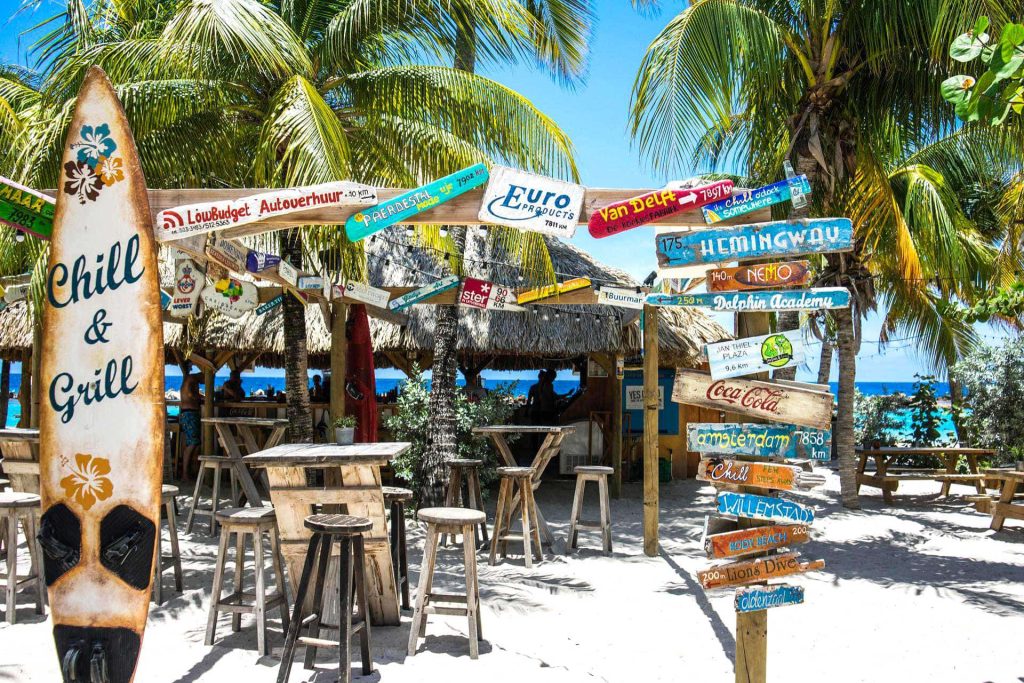
Very close to the Venezuelan border, they are furthest apart from the rest of the Caribbean island groups and offer different diving than the rest. All three islands are similar, yet with their distinct personalities and identities.
Diving in the ABC islands is as relaxed as it gets. Fill your tanks at a local dive shop, put your gear in the rental truck, drive to any beach around the island and jump into the water right there.
Wetsuits are optional as the water is always warm like a bathtub but you will need some dive boots and a rash guard to protect yourself against scratches on the reef.
The marine life here is small and you will probably not see any sharks or rays here. In return, turtles, small fish, and gorgeous, healthy corals are abundant.
Aruba is the smallest of the islands and the least developed. Bonaire has arguably the best diving conditions, while Curacao is a great mix of scuba diving and things to do around the island.
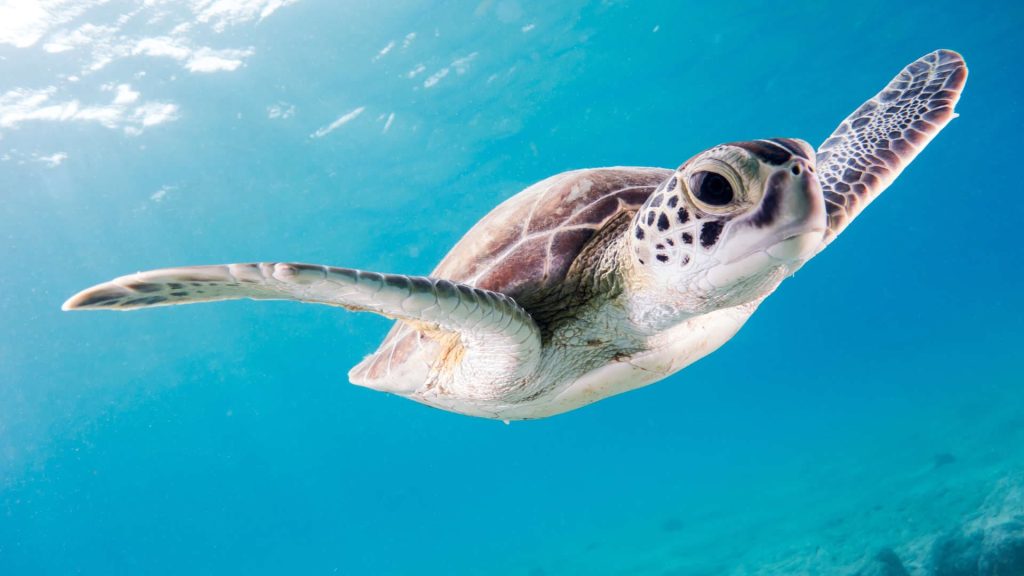
Best Diving Destinations in the Caribbean 2025
The Bahamas
The British Virgin Islands
Cuba
Grenada
ABC-islands
Cayman Islands
Barbados
Dominica